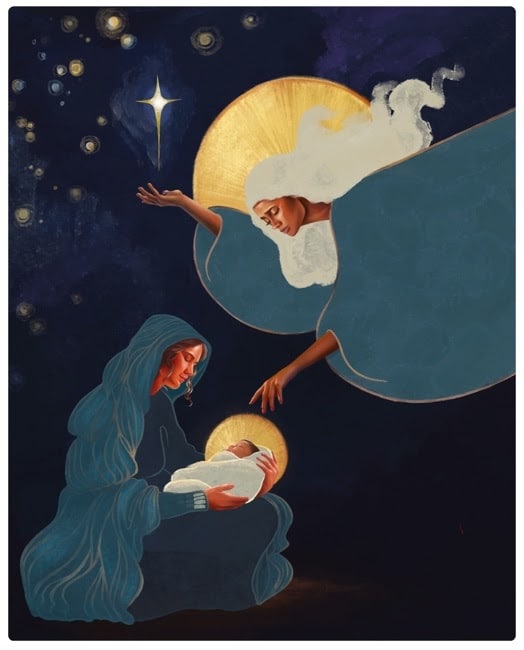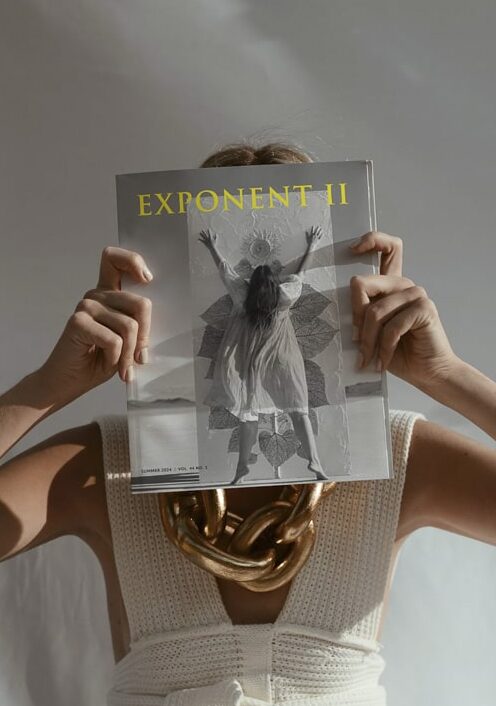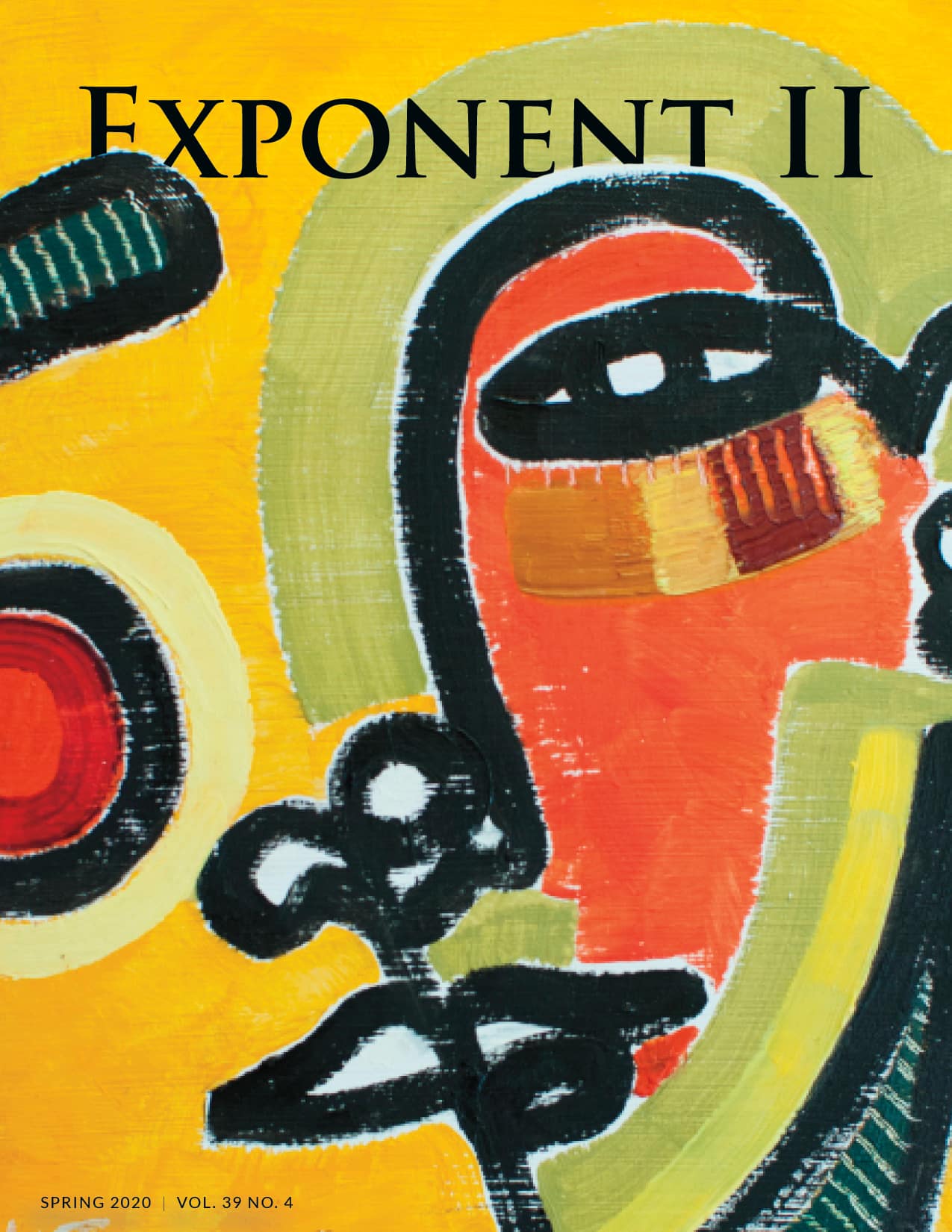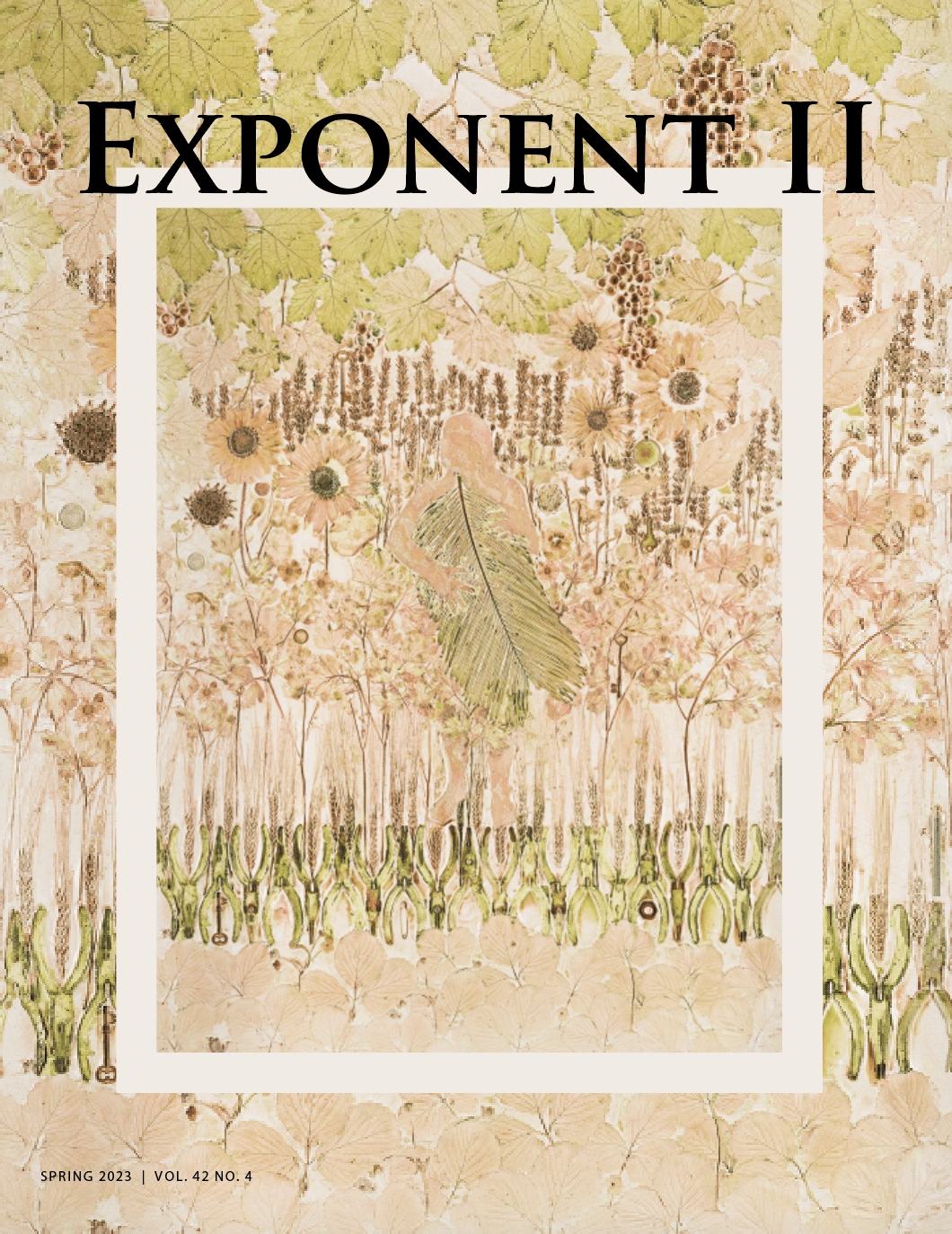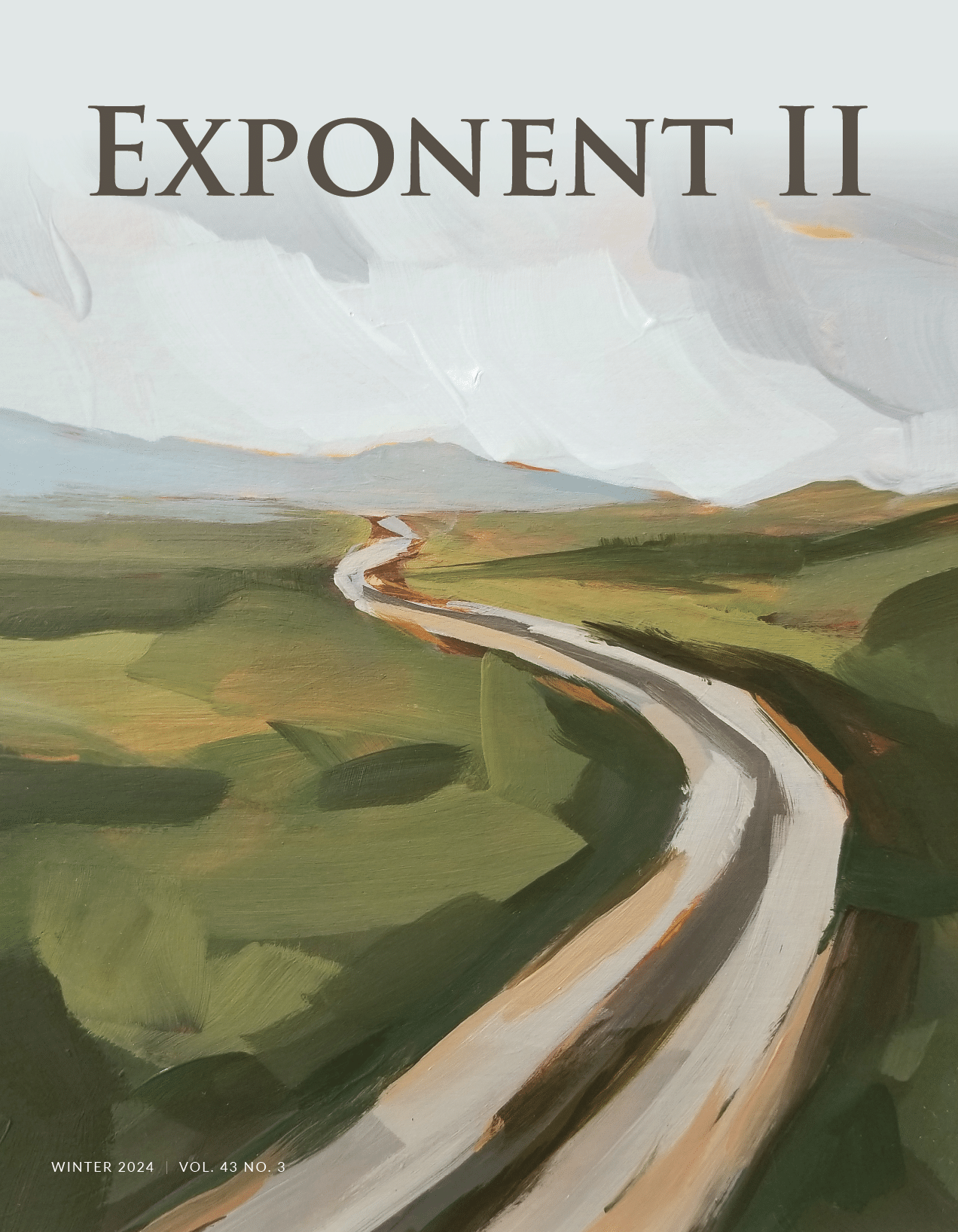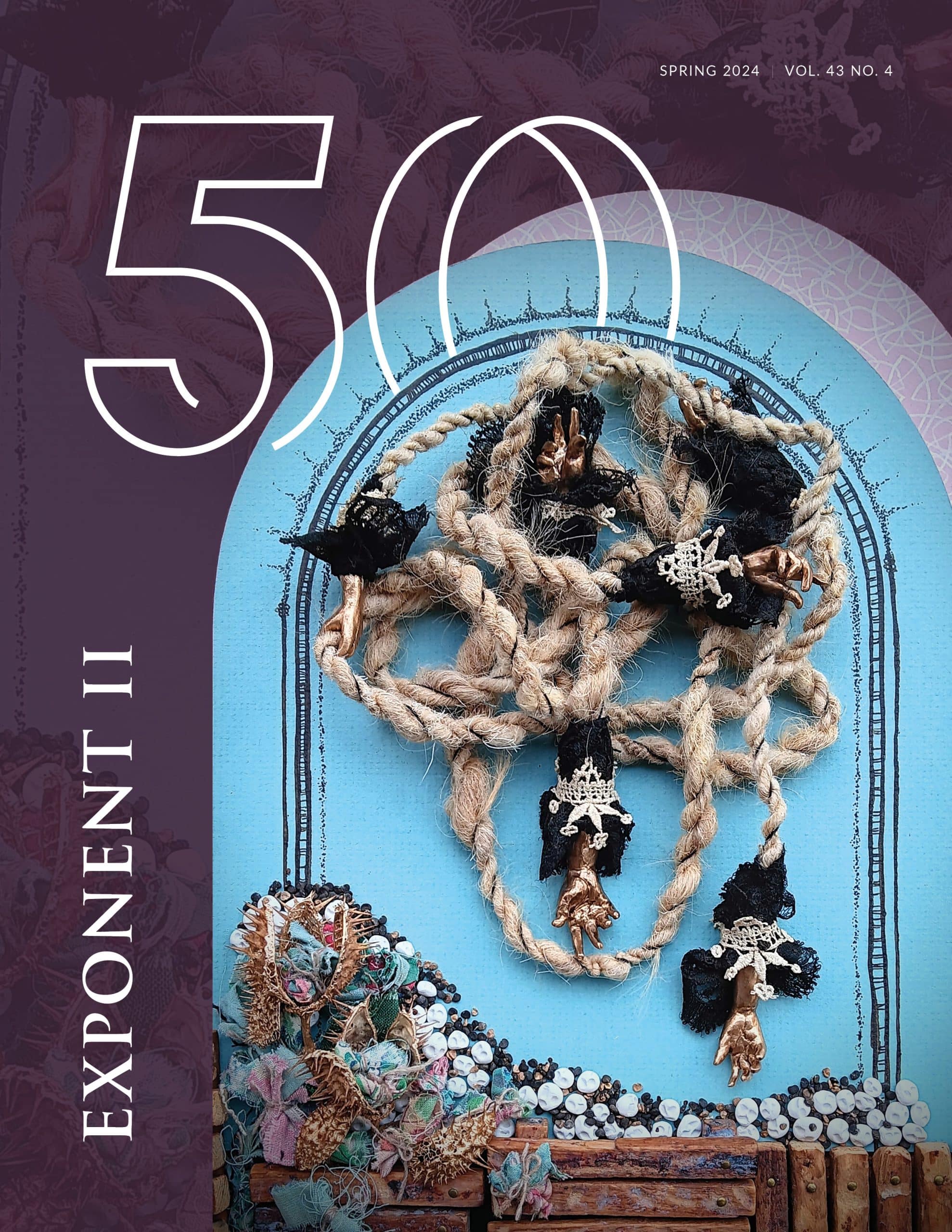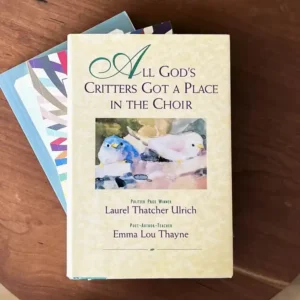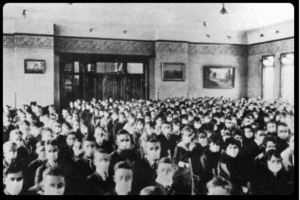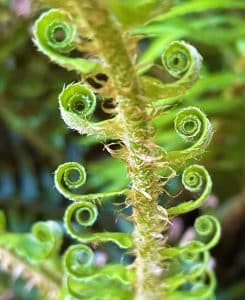BY GUEST POST · PUBLISHED NOVEMBER 23, 2021 · UPDATED NOVEMBER 15, 2021
Guest Post by McArthur Krishna and Martin Pulido.
McArthur comes from a pack of storytellers. And while the pack rightly insists she’s only in the running for third-best storyteller on a good day, she’s made her living in stories. Stories in words and visual art that inspire, demand, encourage and cajole us along this wild ride of life. If you know her, she will unabashedly tell your stories too (with some degree of truthiness). Look out.
Martin is the co-author of the BYU Studies article, A Mother There: A Survey of Historical Teachings about Mother in Heaven
This is the fifth of a seven-part series about why Heavenly Mother is essential.
Part 1, Part 2, Part 3, Part 4
You would think after years of doing research on Heavenly Mother for our books that I would be little more on top of things. Still, last Christmas when I saw a piece of art that showed Heavenly Mother handing Jesus to Mary, I stopped in my tracks. Jaw-dropped.

But what stunned me was simple— I had never considered that She had sent HER son. I think we have heard the phrase so often “God sent His son” that it just never hit my brain that even the son of God has two parents. Jesus would not exist without both of his parents. Knowing this and recognizing Her sacrifice as well as Jesus’ and the Father’s is vital.
Essential Fact #5: Jesus is also Heavenly Mother’s son
Christ had both a mother and father. That parenting together is important. That being involved with us is “Their work and Their glory.”
What does that mean?
It means She is essential to our salvation—as the deity who birthed him.
“The visions and teachings of these prophets suggest that Christ is as bonded to his Heavenly Mother as to his Heavenly Father and that the Mother plays a role in our salvation commensurate with the role played by the Father.”
Val Larsen (First Visions and Last Sermons)
If we follow Christ’s example, then it means Heavenly Mother matters. If it mattered that He would have a mother, it matters that we do too.
It means that Heavenly Mother is not a doctrine just for women.
When Bethany and I sat down to write our Heavenly Mother guide book, we wrote a girl’s version. We each have three daughters, we write books about women in the scriptures; it just made sense. And then I got a message from a woman who begged me to make our book into a children’s guide. I refused on the principle that we were discussing wombs and hips and whatnot and I didn’t want a boy in that space. However, I offered that she could send me an email with her thoughts on why we should write a guide for boys. As a mother to five boys, she had a lot of thoughts. I called Bethany, “We got to do a boy’s guide. Not kidding.”
Many of the specifics of Heavenly Mother matter to all genders and to those who don’t ascribe to a gender. Heavenly Mother is our mother. But, for the purpose of the rest of this article, I want to talk about why the doctrine of Heavenly Mother specifically matters to men.
Valerie Hudson has shown us that when countries treat women more equitably, the countries fare better. Yet the understanding that the divine model is equality of Heavenly Mother being on par with Heavenly Father as equitable partners impacts lots of different spheres. I was reading an article that talked about men and women who share more tasks in their homes have a lower rate of divorce. If both partners are sharing and working together that means you feel like more like a team and you’re more likely to want to stay. This knowledge changes our priorities and ranking family as vital. And it is not just the relationship of men and women. Knowledge that Gods live in relationships, means we need to practice, value, and invest in those.
I am not a negative person, but it does not seem to me that many boys are being raised with this understanding, in or out of our faith.
How would the world shift if men and women saw each other as their peers? That equality is the divine model and the two Supreme Beings of the universe are on par with each other? I heard a story of a mission president who was just exploring this doctrine. As the implications unfolded to him he said, “I wish I would have known this. It would have changed how I treated the Relief Society President in my ward when I was bishop, it will change how I treat the sisters in my mission, it changes how I treat my wife.”
It changes everything.
Yet, this is all from my perspective as a woman. Since I often get the feeling people consider Heavenly Mother to be a doctrine that only concerns women, I asked Martin Pulido what his thoughts were. He is one of the authors of the A Mother There article and he teamed up with us for our “Boys Guide to Heavenly Mother”. Martin is a great thinker and showed me ways to consider Heavenly Mother that I never had before. For this post, I also called on Martin: his thoughts are the following.

Crystal Suzanne Close, “A Heavenly Mother’s Love”
From Martin:
Like many latter-day saints, I grew up somewhat familiar with the idea that I had a Heavenly Father and Heavenly Mother. I sang O My Father and Oh, What Songs of the Heart (not surprisingly I had not sung We Meet Again as Sisters) in worship services. The belief in “heavenly parents” was communicated in the First Presidency’s Family Proclamation, which I received as an 11 year-old living in Spain in Fall 1995. My family spoke about the idea some in a family home evening, and it appeared in Sunday School discussions. Most of the time it was a sidebar conversation, with an “okay, that makes sense” reaction from me, but I always felt a longing to know more. I loved my earthly mother deeply, and expecting my Heavenly one to be somehow like her, I wanted to know about my Heavenly Mother.
When I was given the opportunity to research further into Heavenly Mother in LDS Christian thought in 2008 at BYU, I excitedly jumped at the opportunity. I was surprised at the wide array of reactions I received while I did the research:
- One gentleman predicted due to my line of questioning that I would become some hippie “know-it-all” in the back of the pews sporting a long beard and kicking my feet up on chairs wearing Birkenstock’s. (I can imagine worse fates)
- Some belittled the whole activity: “any ‘research’ toward Heavenly Mother will be into books and articles written by those who don’t have or don’t follow the Spirit.”
- Others cautioned me: She was too sacred to talk about, so why was I probing?
- Some concerned family members worried I would be excommunicated
- In one case a family member offended me, stating in not so many words that all women adored me for my Heavenly Mother research, and if I hadn’t already been married, I could pretty much get any LDS girl that I wanted for what I was doing. As if that was entering my mind? I found the comment deeply unsettling. I didn’t think Heavenly Mother would take too kindly of any thoughts like that.
- And then was one that really surprised me — people asking why I was so interested and touched by the doctrine given that I was “male and Melchizedek”
I’d like to speak on this last reaction. I’ll start by noting how I understand why Heavenly Mother means much to latter-day saint women. In a faith that has embodied Heavenly Father and Jesus as male, masculinized its angels in scripture as resurrected ancient male prophets, and had the mouthpieces of God’s will on earth be male priesthood holders, it can be hard for women to see themselves in God. As Eve was carved from Adam, women can be viewed as secondary, derivative, an distorted echo of the male. Indeed, women in LDS art until this last generation were largely portrayed as the saved, not as saviors, on the path to sanctification, but not holy. They may have been faithful, dynamic saints, yet they were elevated to this station solely through the instrumentality of the male. Heavenly Mother ruptures this pattern, allowing women to see the divine in themselves, as equal and not subordinate or holy only in consequence of men. Their femaleness is not something they need to transform to become like God. It’s already there. It makes up God.
To see God in a woman is to recognize greater weight behind a woman’s voice. I remember in college and as a missionary, when men would take a break during a talk in General Conference presented by a Relief Society, Young Women’s, or Primary presidency member as “they weren’t really prophets” anyway. Their “message was for moms”; it may have been nice to listen to, provided uplifting commentary, but it wasn’t really necessary as they “couldn’t speak for God.” But when God is in a woman, it’s hard to dismiss their words, to not respect their perspectives and let the Holy Spirit confirm them. This insight extends beyond how we interact with women in the Church, but how we interact with women in our homes, workplaces, and community organizations.
To see God as my Heavenly Parents enables us to see divinity as emerging from relationships between men and women. It calls out very quickly that it’s not all about you as a man, or as an individual. Divinity is an inherently social venture. B. H. Roberts astutely observed: “To one accepting ‘Mormon’ theology, the sexes are not made to walk separately and alone… Neither one can say to the other, ‘I have no need of thee!’” Men and women require each other; there is no concept of “divinity” without them working together. How this can cause us to the re-prioritize the value of our relationships. Far from corporate ladder climbing, progression in eternity is more around the quality of, commitment to, and sacrifices made for our relationships with our earthly and Heavenly families.
All this said, to reduce Heavenly Mother to a potential source of female empowerment is a mistake. Heavenly Mother means much to me and other latter-day saint men. Just as the giving of God’s Son to the world re-contextualized our understanding of God’s love, Heavenly Mother, with the deep sacrifice mothers have in bringing in and flourishing a life, further transforms our understanding of divine grace. It balances the generosity of redemption with the generosity of creation. It calls out that our Heavenly Parents sacrificed time, energy, and no doubt emotional heartache to hold an eternal responsibility over our development and care.
When one looks, scripture communicates of God’s supreme maternal care. Whether described as a mother eagle, a hen hovering over her chicks, or a bear defending her cubs, God as mother is there. God asks in 1 Nephi 21:15, “For can a woman forget her sucking child, that she should not have compassion on the son of her womb?” As is sadly sometimes the case, God observes, “Yea, they may forget,” but then counters against this impoverished reality, that “yet will [God] not forget thee, O House of Israel.” God will be the mother that mortal women sometimes fail to be. God is the Mother of mothers. These words always made more sense to me in context of a Heavenly Mother.
To breathe deeply in the reality of a Heavenly Mother mystifies one with overwhelming security that there is another perfectly loving being bolstering you and helping you grow into all you can be. There is latitude in the will of a Mother, who endures the pain and joy of separation to allow newness of expression. As with Moses’ mother Jochebed, Heavenly Mother passed us along to another mother, to experience a different life raised in Pharaoh’s courts (the world) to grow our souls. In this there is a confidence that God is letting you discover yourself, to learn through experience the good from the evil, and determine what you want.
While we were given up, and there is a freedom to be experienced in mortality, that flexibility is balanced by the haunting possibility of squandering one’s life. For to be the son of a Mother calls out what we owe, an indebtedness one grapples with even as one does not know how or when they can fulfill it. For how can a man repay a mother for their birth? Yet the unpayable debt commands effort, to love and give even as you were loved and Given. As a result, I am constantly nudged by questions such as, “Am I honoring Her (and my Heavenly Father)? Am I treating my brothers and sisters, my wife, as I ought? What do my Heavenly Parents think of me? Am I following Their Son?” The debt of creation calls me to embrace parenthood in the broadest sense, of caring for and tending to one’s community, to adopt the world as my stewardship, to increase the scope of my responsibilities.
It is to appreciate what you’ve been given by women too – to look into the face of a man, and to see a woman there. To see Heavenly Mother in you, or in Jesus Christ. The Church’s family search application has a fun Compare-a-Face activity, which allows you to see how facial features match those of ancestors. It’s no surprise that many female ancestors are shown to be close matches. You get to see yourself as participating in a matriarchal line. It may be the waviness of your hair, the tint of your eyes, the curve of a lip, the prominence of the cheekbones. As we peer into our characters and personalities, as men we likewise ask, “what is it that comes from Her?” I am sure much does.
There is a lovely poem by Deja Earley, “Of Thy Womb,” where the female narrator reflects on the presence of Heavenly Mother after the death of a baby’s premature delivery. “She’s not at my bedside, shimmering / in empathetic sorrow when I wake. She’s not / there at the edges of me, or at the emptied center.” But one area the narrator sees her Mother’s possible presence is in the tenderness of her Catholic husband. “perhaps She’s in Sam’s hand / as he passes it over my forehead / gently as a prayer.”
As a man, I can be empowered by seeing Heavenly Mother in myself. My masculinity does not keep me from embracing Her as a role model. Men can see Her in, and honor Her by following, Her Son Jesus Christ, recognizing Christ as fully manifesting the Father and the Mother’s perfections and love. To see Jesus’ own description of himself as a mother hen looking over chicks shows how he developed maternal love at Jerusalem and in the Americas. Such an image echoes God’s own roosting over the world on creation’s morn and beckons all men everywhere to grow in motherly kindness.


